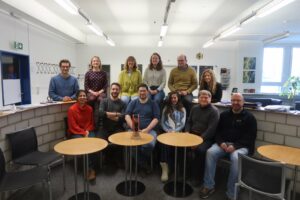
Small-scale gravity waves (GWs) are vital to the dynamics of the Earth’s atmosphere, but are difficult to simulate accurately in weather and climate models. While major advances have been made in recent years in our ability to observe GWs from space, translating these advances to model development is complicated by the fragmentary view these observations provide.
In SWANS, our International Team will combine space-based observations and high-resolution simulations to demonstrate a novel pathway to better representation of GWs and their effects in next-generation models. We will do this by adapting a widely-used satellite development technique, the Observing System Simulation Experiment, to the problem of the effectively-fixed GW observing system. This will allow us to produce detailed information on how current instruments ‘see’ GWs when their sensing parameters are reproduced in state-of-the-art high-resolution atmospheric models.
This approach will allow us to both identify deficiencies in the current GW observational constellation and improved ways to observationally constrain GW parameterisations in next-generation weather and climate models. We will promote these results via our membership in international projects within the World Climate and World Weather Research Programmes (WCRP and WWRP), ensuring broad dissemination and a pathway to real-world impact on numerical weather prediction and climate modelling.
Outputs
Ern, M., Diallo, M. A., Khordakova, D., Krisch, I., Preusse, P., Reitebuch, O., Ungermann, J., and Riese, M.: The quasi-biennial oscillation (QBO) and global-scale tropical waves in Aeolus wind observations, radiosonde data, and reanalyses, Atmos. Chem. Phys., 23, 9549–9583, https://doi.org/10.5194/acp-23-9549-2023, 2023.
Emily Jane Lear, Corwin James Wright, Neil Hindley, et al. Comparing gravity waves in a kilometre-scale run of the IFS to AIRS satellite observations and ERA5. ESS Open Archive . October 17, 2023.
DOI: 10.22541/essoar.169755196.69126430/v1 [under review]
